Overview
The article presents nine effective business wine strategies designed to enhance the success of wineries, with a particular emphasis on direct-to-consumer (DTC) approaches, personalized customer experiences, and the strategic use of technology.
By implementing these strategies—such as optimizing e-commerce platforms and leveraging data analytics for customer insights—wineries can significantly increase sales and cultivate long-term customer loyalty in an increasingly competitive market.
This comprehensive approach not only addresses the current challenges faced by wineries but also positions them for sustainable growth in the future.
Introduction
In an industry where tradition converges with innovation, family-owned wineries confront the pressing challenge of distinguishing themselves in an increasingly crowded marketplace. The emergence of direct-to-consumer sales presents a golden opportunity for these vineyards to forge deeper connections with their customers, driving sustainable growth.
What strategies can wineries implement to not only enhance their brand presence but also transform casual buyers into loyal club members amidst this competitive landscape? By addressing these pivotal questions, wineries can navigate the complexities of the market with confidence and purpose.
Enocap: Transformative DTC Strategies for Family-Owned Wineries
Enocap stands at the forefront of crafting bespoke direct-to-consumer (DTC) strategies, empowering family-owned vineyards in the business wine sector to cultivate meaningful connections with their customers. Our comprehensive consulting services are dedicated to fostering DTC growth, enhancing brand narratives, and securing strategic capital, all aimed at ensuring that business wine thrives for generations.
By optimizing online sales platforms and elevating customer engagement through personalized marketing, businesses can effectively harness the burgeoning demand for business wine experiences. Proven strategies have enabled vineyards to achieve e-commerce growth of up to 191%, successfully transforming casual purchasers into loyal members of their business wine clubs.
Data analytics are pivotal in refining sales strategies, providing vineyards with deeper insights into customer preferences and behaviors in the business wine sector. This focus on personalization transcends mere trend; research indicates that 80% of consumers are more likely to , significantly boosting revenue for wineries.
As the DTC beverage market continues to evolve, producers who embrace these strategies can anticipate forging lasting relationships with their customers, ultimately propelling sustainable growth in the business wine sector within an increasingly competitive landscape. Additionally, strategic capital planning is essential for vineyards seeking to align with the right partners and funding opportunities to support their growth.
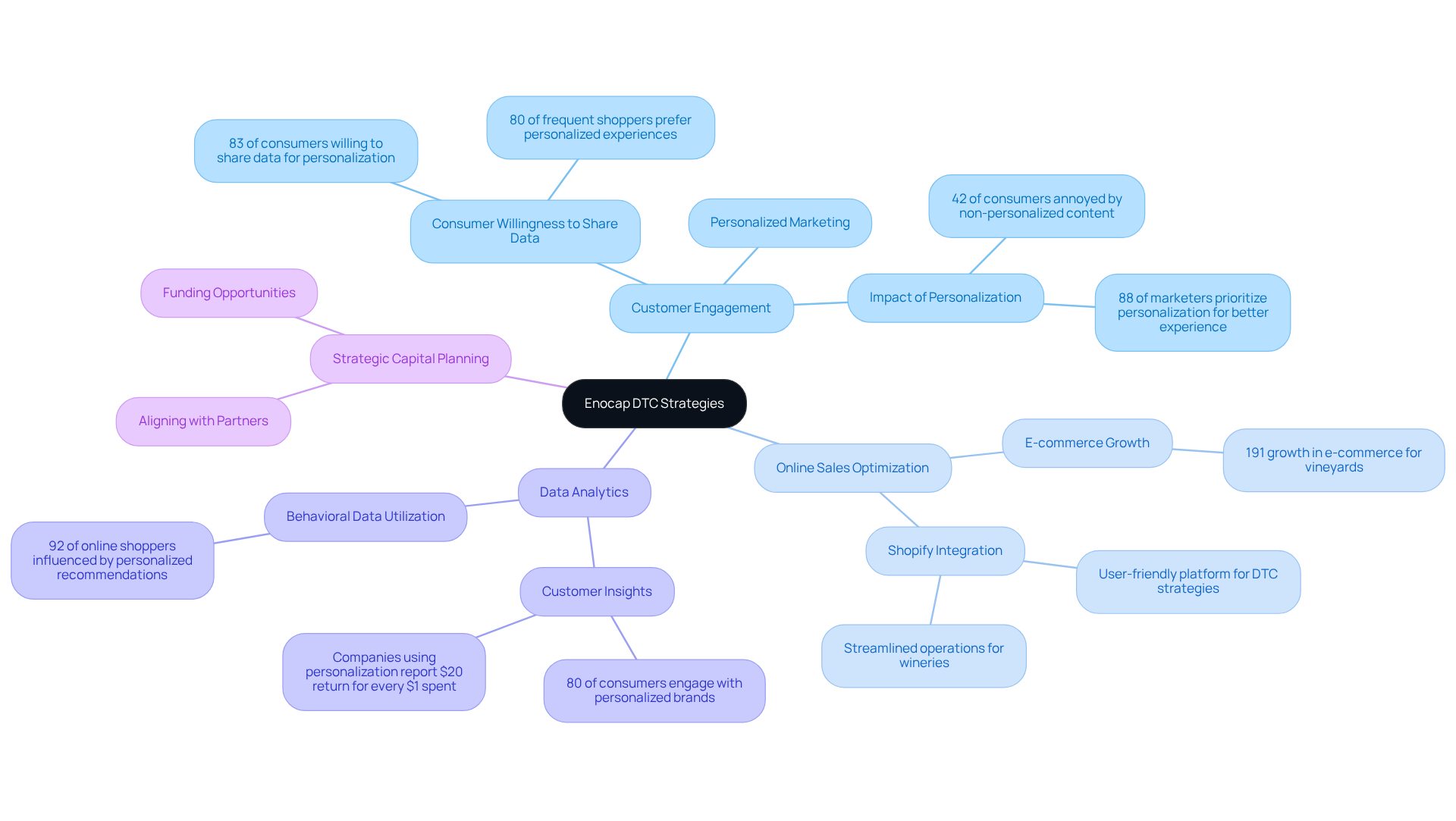
Optimize Wine Club Memberships: Enhance Customer Loyalty and Revenue
To enhance club memberships, producers must prioritize personalized experiences that resonate with their members. Offering exclusive access to limited releases, curating tailored wine selections based on individual preferences, and maintaining engaging communication are essential strategies that keep members informed and excited about upcoming offerings.
A strategic implementation of tiered membership structures can further incentivize higher spending and foster deeper loyalty among members. Successful vineyards have discovered that personalized email suggestions significantly enhance member engagement, leading to improved retention rates.
Celebrating member milestones with personal notes or exclusive offers can create a sense of community, reinforcing long-term loyalty. With 36% of vineyards missing the opportunity to , there is substantial potential for growth by adopting these intentional strategies.
By concentrating on appealing offers and unforgettable experiences, vineyards can effectively draw in new members and sustain engagement, ensuring the longevity and success of their wine clubs.
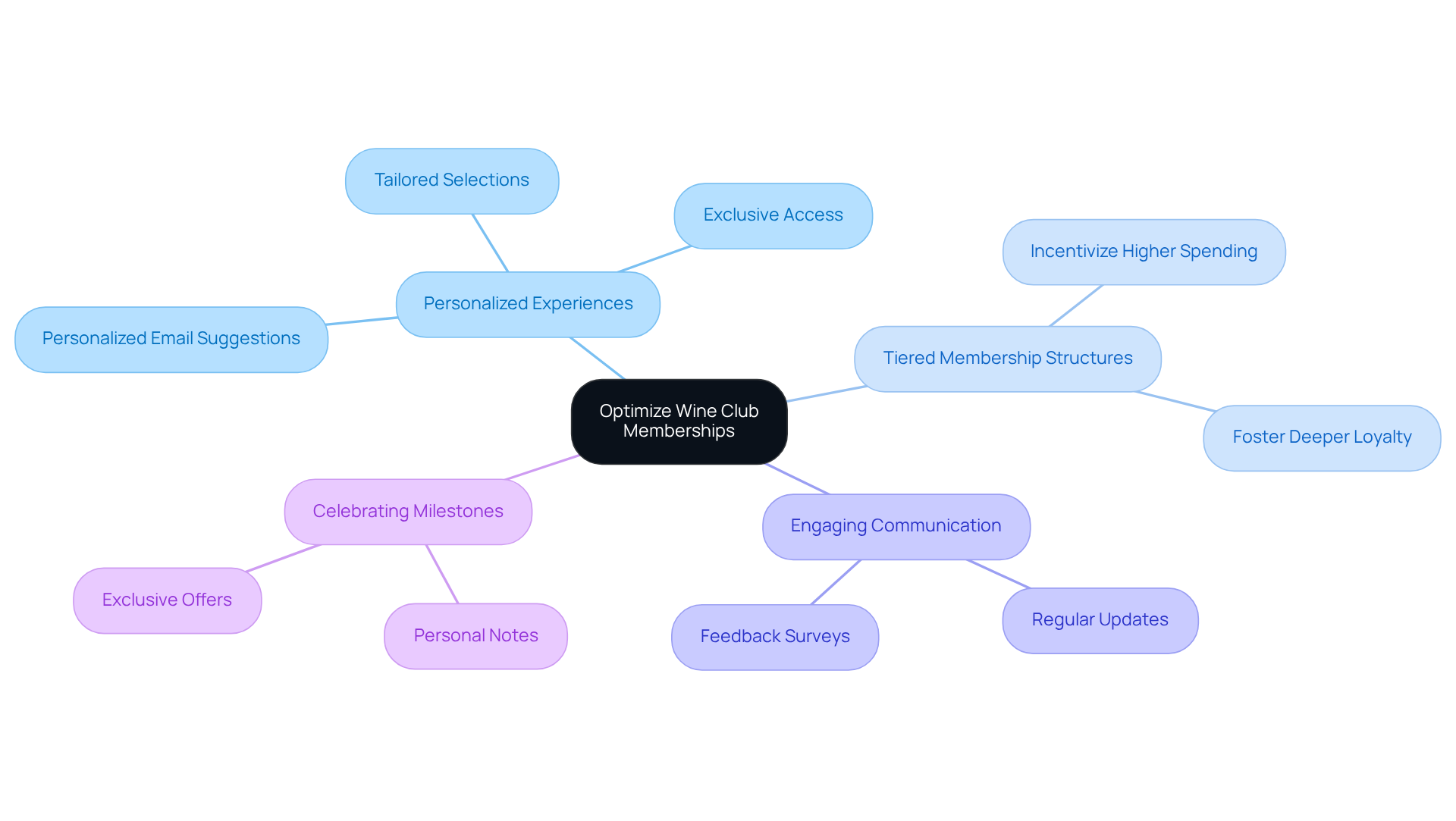
Implement Demand Generation Techniques: Drive Sales and Attract New Customers
Wineries can effectively leverage a variety of to drive sales and attract new customers. Targeted digital advertising is essential, enabling vineyards to reach specific demographics with precision. By creating engaging content that narrates the winery's unique story and showcases its offerings, wineries can capture the attention of potential buyers.
Moreover, social media campaigns play a crucial role; 87% of shoppers indicate that social media influences their buying choices. Hosting virtual tastings and wine education sessions not only generates interest but also cultivates a deeper connection with customers, ultimately enhancing brand loyalty.
Additionally, strategic capital planning supports these initiatives by ensuring resources are allocated effectively to maximize impact. Successful digital advertising campaigns, such as Last Bottle's 'Marathon Madness,' exemplify the power of influencer partnerships in driving significant web traffic and sales.
By applying these strategies, vineyards can create unforgettable experiences that resonate with their audience and enhance their success.
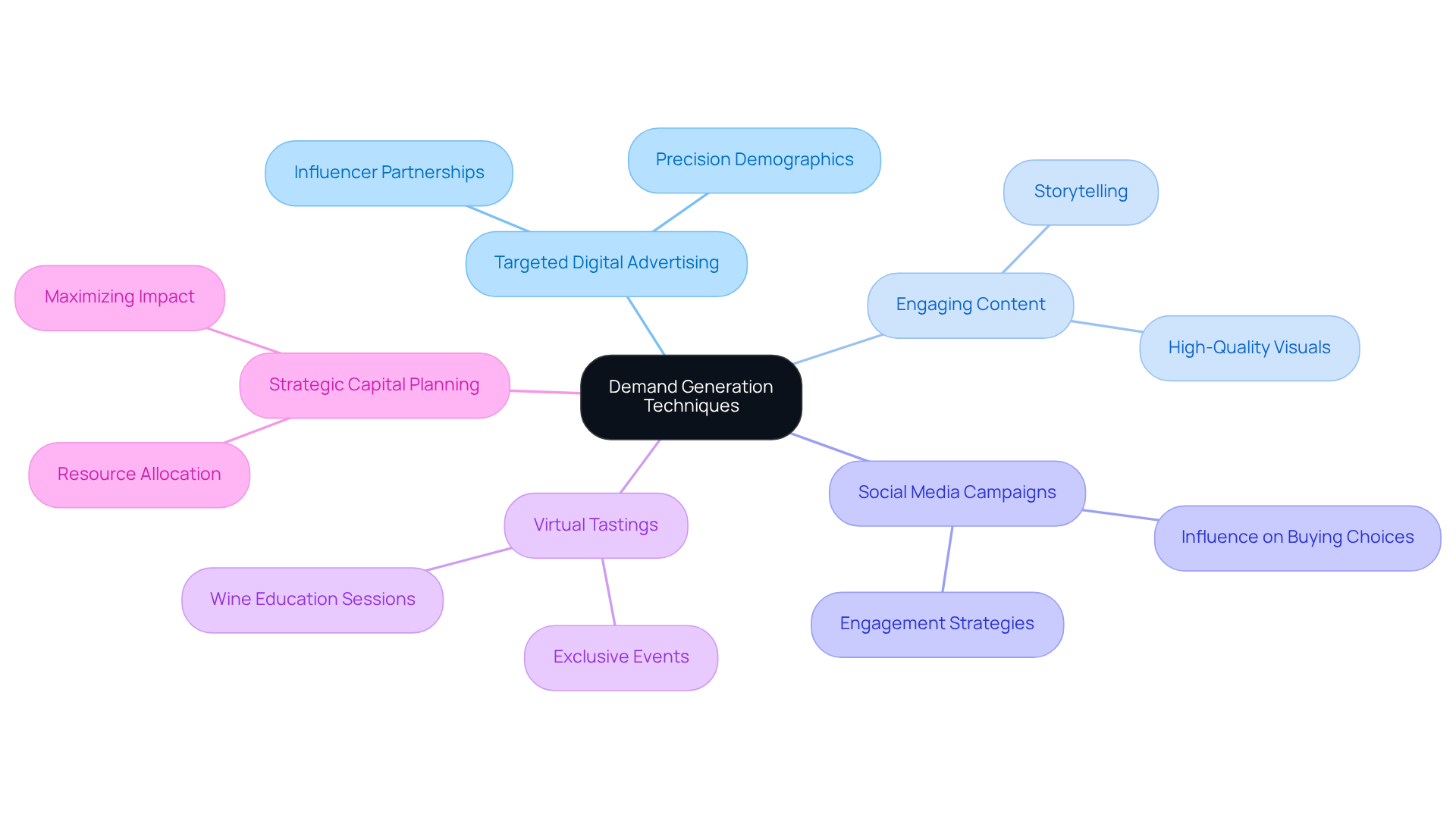
Leverage Social Media Marketing: Engage Consumers and Build Brand Presence
Wineries must harness the power of like Instagram and Facebook to effectively showcase their products and engage with consumers. Consistently sharing high-quality images of vineyards, wines, and events not only attracts followers but also retains them. Engaging content—such as polls, contests, and live Q&A sessions—fosters community interaction and strengthens brand loyalty.
As Rob Croll observes, social media serves as a vital touchpoint for storytelling and brand visibility, enabling producers to tailor their messaging to connect with their target audience. Effective campaigns, exemplified by Cerreto Winery and Silver Oak, illustrate how captivating visuals and authentic narratives can significantly enhance audience engagement and stimulate sales.
Furthermore, with nearly 90% of global consumers utilizing social media to stay informed about cultural trends, it becomes imperative for vineyards to maintain a vibrant online presence. By establishing sustainable direct-to-consumer channels and employing strategies to convert casual purchasers into devoted club members, producers can amplify their growth potential. A consistent posting schedule further enhances engagement, while user-generated content fosters community and reinforces brand loyalty.
To optimize these efforts, vineyards should also consider strategic capital planning to support their marketing initiatives, ensuring they possess the necessary resources to sustain and expand their online presence. By emphasizing these approaches, vineyards can cultivate a lively online presence that connects them with wine enthusiasts and fosters lasting relationships.
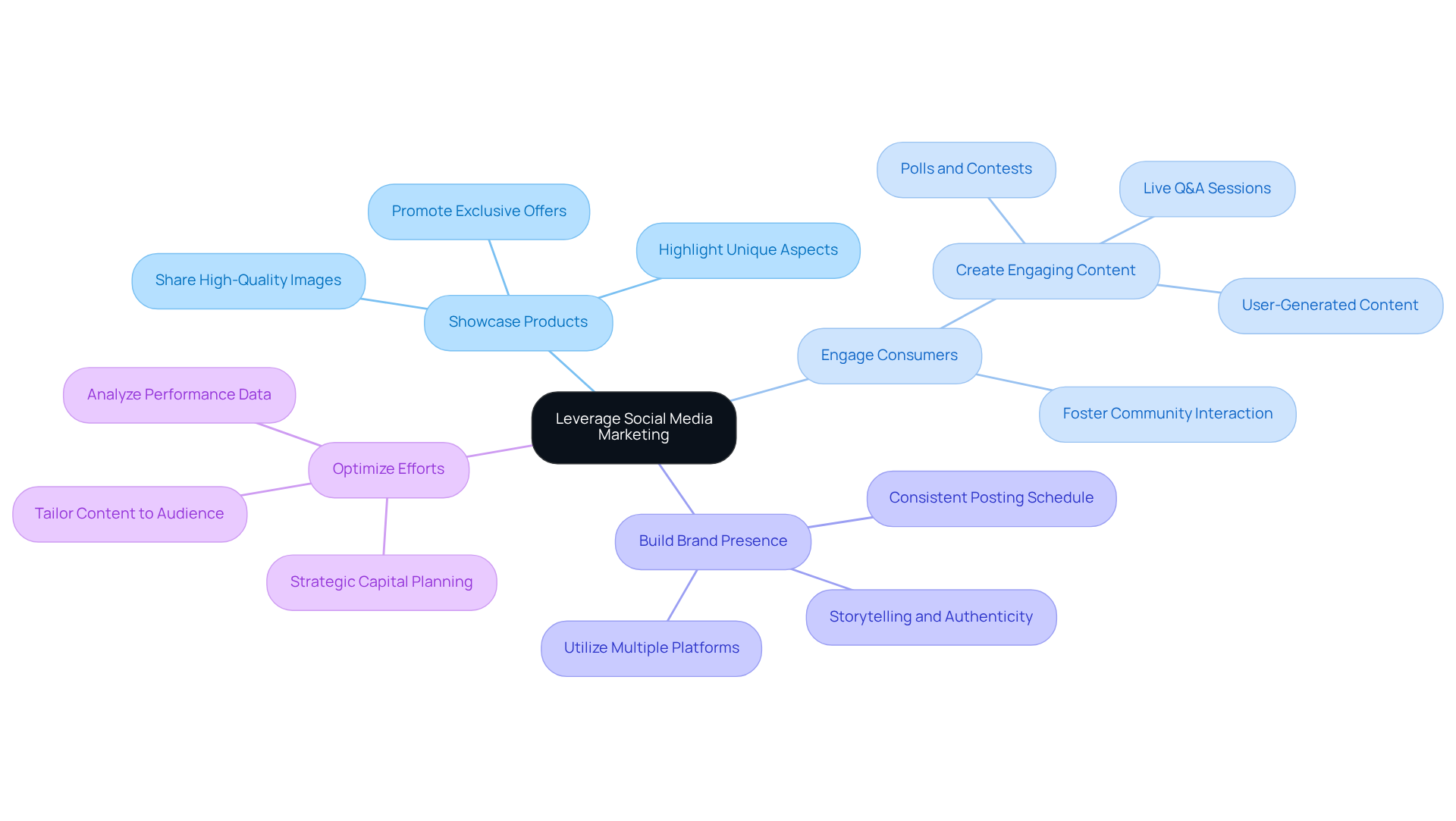
Utilize Data Analytics: Understand Consumer Behavior and Market Trends
Utilizing empowers wineries to uncover vital insights into buyer behavior, preferences, and purchasing patterns in the context of business wine. This intelligence is crucial for shaping effective marketing strategies, refining product offerings related to business wine, and making informed pricing decisions. The shift in consumer demographics indicates a burgeoning interest among younger buyers, who are increasingly investing in direct-to-consumer beverage purchases. Notably, the average price paid per bottle by this demographic surged by 26% between 2019 and 2022, underscoring their willingness to invest in quality wines.
Implementing robust customer relationship management (CRM) systems enables wineries to meticulously track customer interactions, preferences, and feedback. This data-driven approach not only optimizes marketing efforts but also fosters deeper relationships with customers, enhancing loyalty and retention. Successful CRM implementations have shown that personalized marketing campaigns, tailored for specific market segments, can significantly boost engagement and sales.
As the business wine sector grapples with the challenge of appealing to younger audiences, it becomes imperative for producers to adapt their strategies. Developing occasion-focused marketing campaigns aimed at individuals aged 30 to 45 can help counterbalance the decline in the Boomer segment, ensuring sustained growth. Furthermore, vineyards should engage in strategic capital planning to support these initiatives and guarantee long-term sustainability. By understanding and addressing these evolving buyer behaviors, vineyards can establish sustainable direct-to-consumer channels that promote steady growth and position themselves for enduring success in a competitive market.
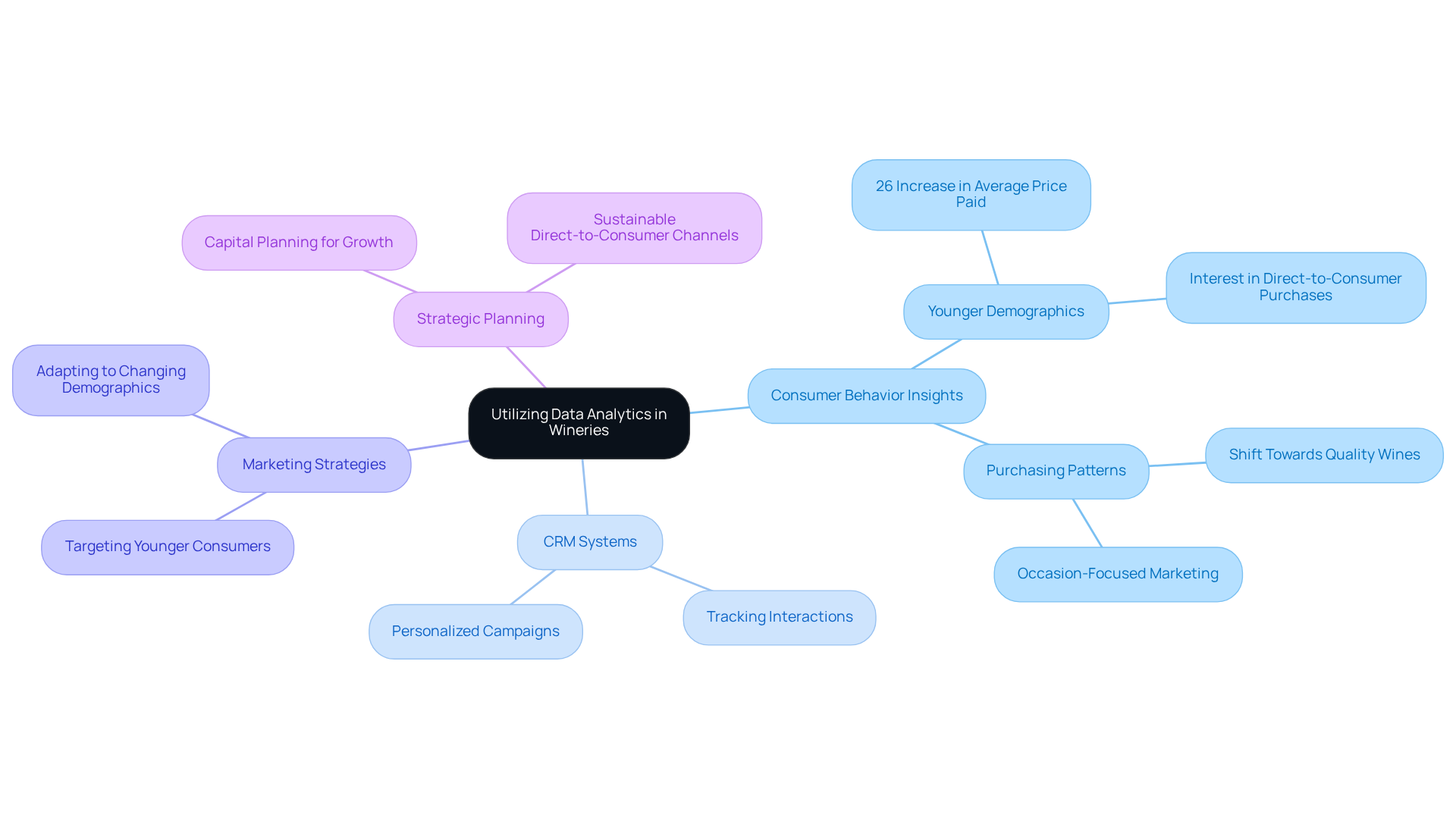
Craft Compelling Brand Narratives: Differentiate Your Winery in the Market
Wineries must craft that encapsulate their history, values, and philosophy of business wine. By sharing stories that emphasize the vineyard's legacy, commitment to sustainability, and the passionate individuals behind the business wine, establishments can forge profound emotional connections with consumers. This storytelling approach resonates particularly well with modern wine drinkers, who increasingly seek to be part of a community or cause rather than merely purchasing a product.
Effective narratives about business wine can be disseminated through various channels, including:
- websites
- social media platforms
- immersive tasting room experiences
This ensures that the unique story of the establishment reaches a broad audience. As noted by industry experts, the art of storytelling is essential for business wine producers aiming to establish a distinctive brand presence and foster long-term loyalty among their customers. Significantly, 27% of club signups occur through digital storytelling, underscoring its quantifiable impact.
In today's evolving business wine PR landscape, where traditional methods have shifted towards storytelling and consumer engagement, integrating sustainability into these narratives is crucial for resonating with eco-conscious consumers. Furthermore, effective capital planning plays a vital role in supporting these storytelling initiatives, enabling family-owned vineyards to secure the necessary resources and partners for business wine expansion and to transform casual purchasers into devoted club members through established [direct-to-consumer approaches](https://enocap.com).
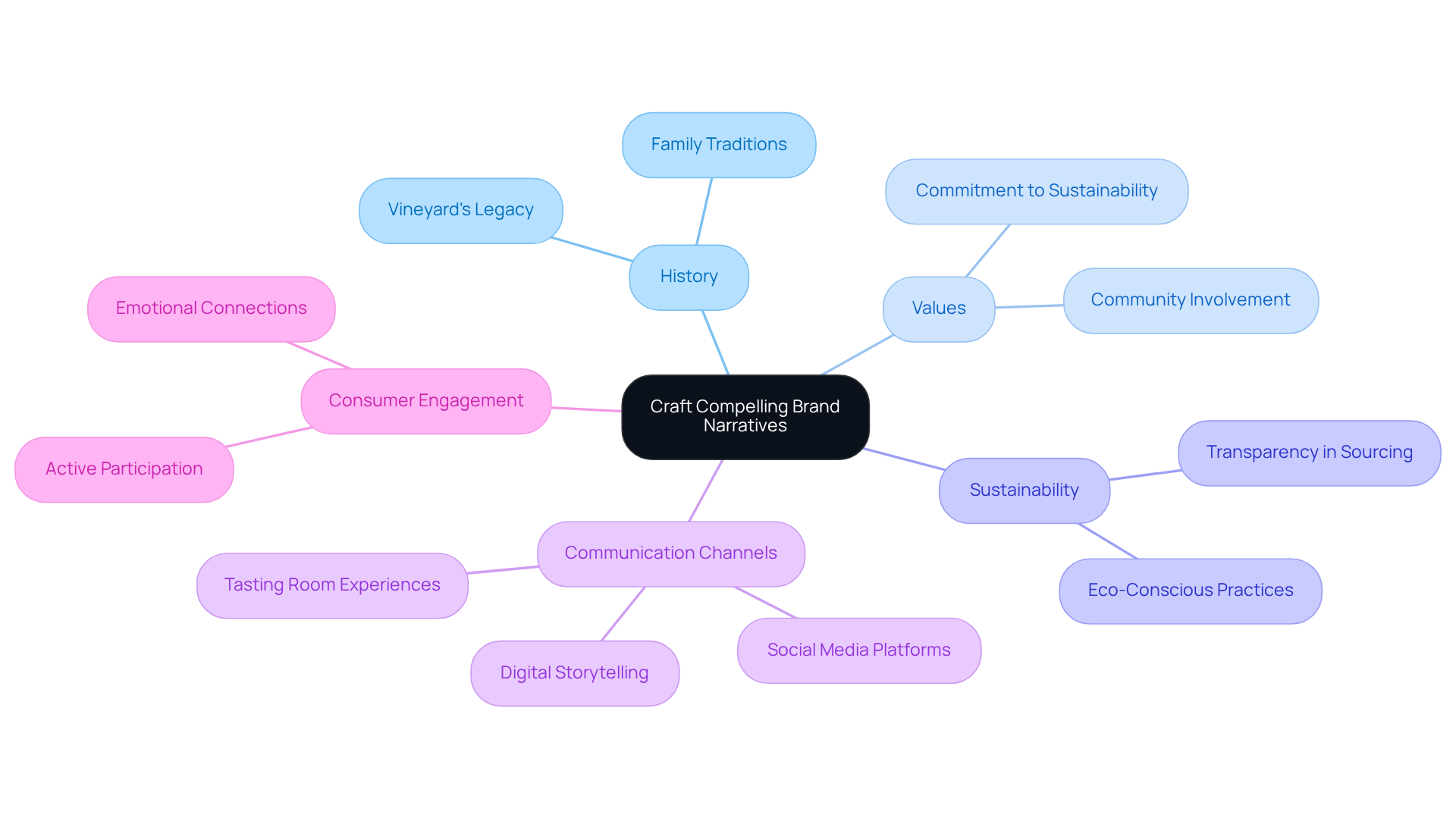
Collaborate with Local Businesses: Expand Customer Reach and Community Ties
Wineries can significantly enhance their market presence by collaborating with local restaurants, hotels, and tourism organizations to develop . This strategic partnership not only draws in new clients but also bolsters the establishment's reputation within the community. By creating engaging brand narratives and utilizing direct-to-consumer approaches, wineries can effectively capture attention and build interest.
Hosting events such as wine-pairing dinners or vineyard tours creates valuable cross-promotional opportunities, allowing all parties to benefit from increased visibility and customer engagement. For instance, establishments that participate in joint marketing have reported notable sales increases, with effective strategies leading to enhanced customer loyalty and brand recognition.
As one thriving vineyard remarked, 'Partnering with local enterprises has not only broadened our reach but also strengthened our connections within the community.' This transformation of casual purchasers into dedicated club members through local connections fosters a sense of community while expanding the customer base, ultimately driving sustainable growth.
Additionally, strategic capital planning can further enhance these initiatives, ensuring that vineyards are well-positioned to capitalize on growth opportunities.
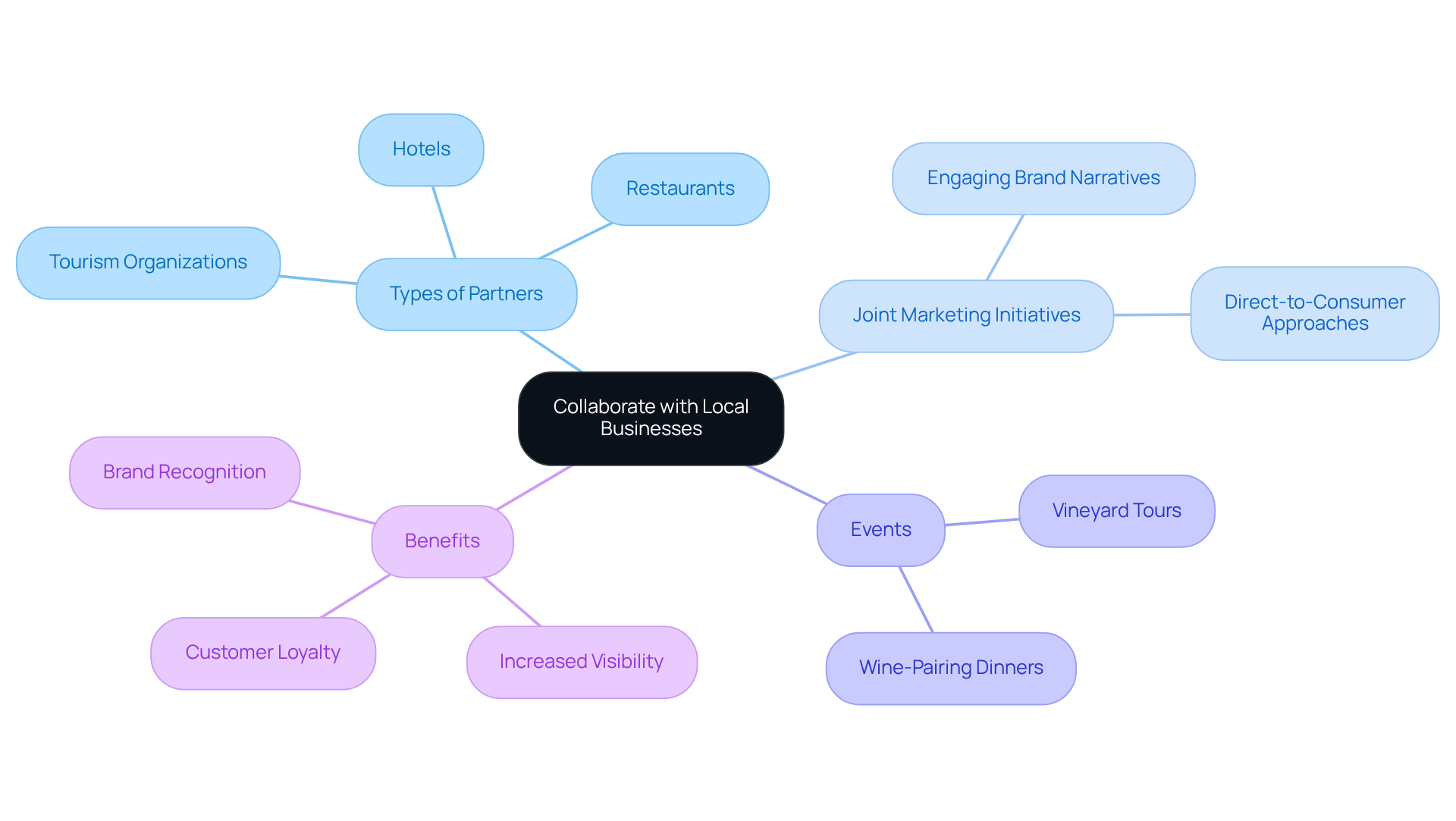
Host Wine Tasting Events: Create Memorable Consumer Experiences
Organizing tasting events enables vineyards to craft unforgettable experiences for customers while executing direct-to-consumer strategies effectively. These events can be themed around specific wines, food pairings, or seasonal celebrations, providing an opportunity to create compelling brand stories that resonate with attendees and drive sales.
Have you considered how incorporating educational components, such as guided tastings or winemaking demonstrations, enhances the experience and fosters a deeper connection with the brand? This approach not only encourages attendees to transform from casual buyers into loyal club members but also drives direct sales and supports for family-owned wineries.
Furthermore, securing the right capital to support these initiatives is crucial for ensuring consistent growth and long-term success.
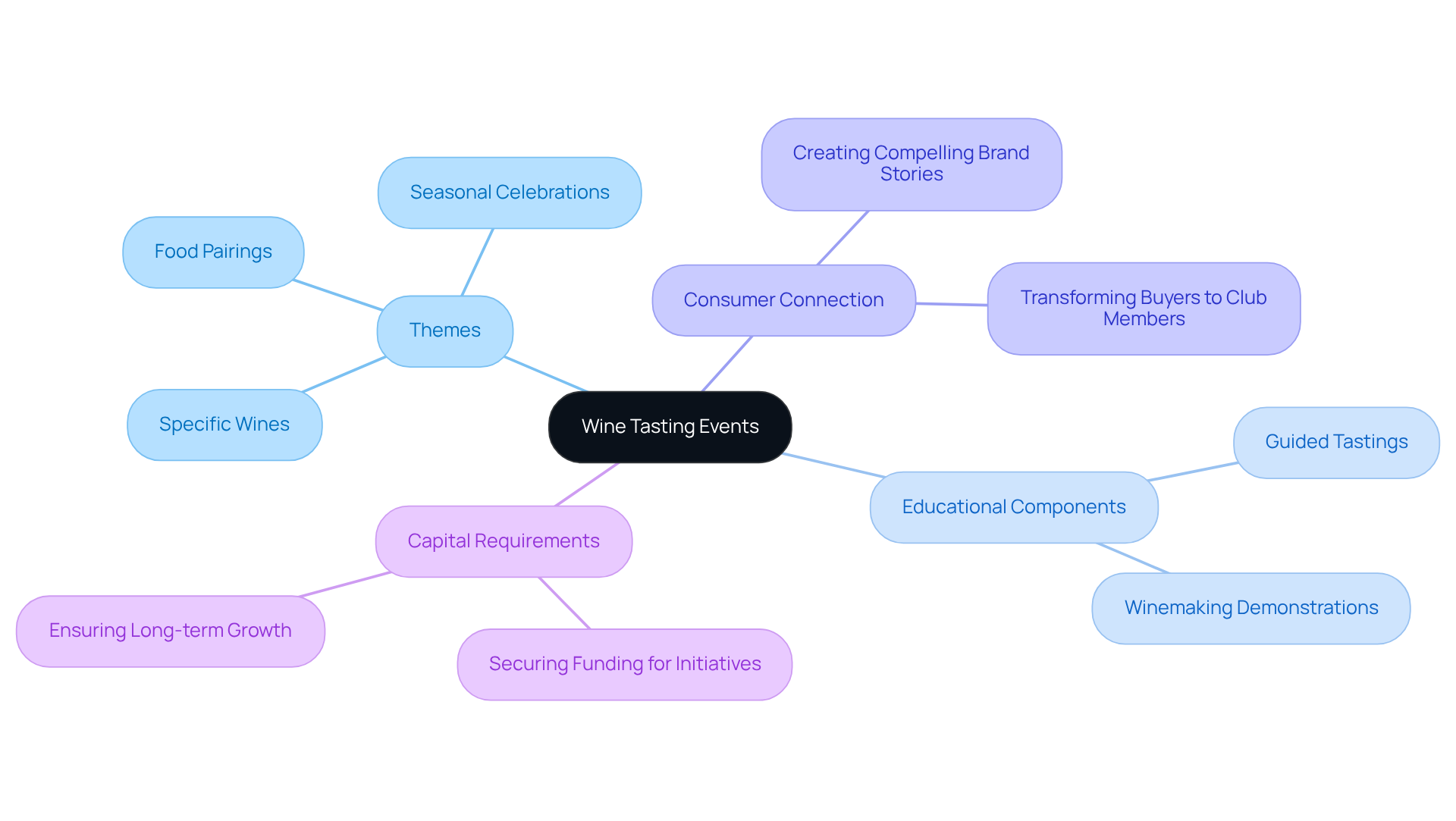
Invest in Sustainable Practices: Appeal to Environmentally Conscious Consumers
Wineries are increasingly acknowledging the importance of investing in sustainable practices, such as:
- organic farming
- water conservation
- eco-friendly packaging
These initiatives not only promote environmental stewardship but also significantly enhance brand loyalty among consumers. Research indicates that:
- 76% of individuals who enjoy grape-based beverages have previously purchased eco-certified varieties.
- A notable willingness to pay a premium for organic selections—22% are prepared to spend an additional USD 5 to USD 16 for organic products, while 19% exhibit similar intentions for sustainable options.
Effectively communicating these sustainability efforts can attract environmentally conscious consumers, who are emerging as a dominant force in the market. Engaging in recognized sustainability certifications further bolsters a winery's reputation, establishing it as a leader in ethical wine production. Experts emphasize that transparency in sustainable practices fosters trust and loyalty, particularly among younger consumers who prioritize authenticity and environmental responsibility in their purchasing decisions.
Moreover, utilizing eco-friendly packaging, such as lightweight and biodegradable materials, resonates with individuals increasingly concerned about the carbon footprint of their purchases. This shift not only meets consumer demand but also aligns with broader industry movements toward sustainability, making it essential for vineyards to integrate these practices into their core strategies.
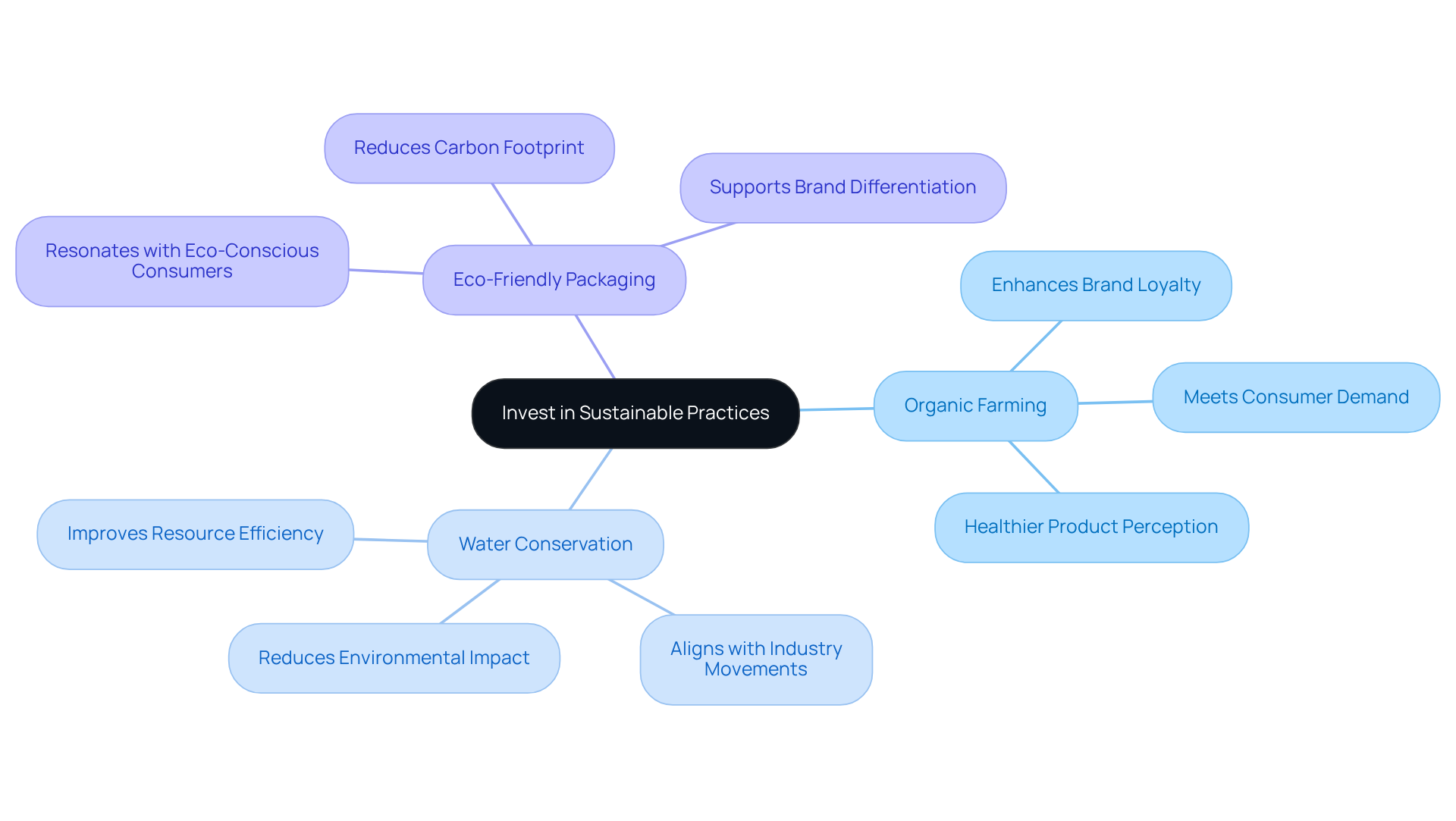
Explore E-Commerce Platforms: Reach a Broader Audience and Increase Sales
Wineries must leverage various to expand their online sales and connect with a wider audience. A user-friendly website, characterized by an intuitive layout and a seamless checkout process, is essential for enhancing the customer experience. Research indicates that a well-optimized website can significantly influence conversion rates, making it imperative for vineyards to prioritize website design and functionality.
Furthermore, implementing digital marketing strategies, such as search engine optimization (SEO) and targeted advertising, can effectively drive traffic to the online store, ultimately increasing sales. Experts assert that a robust online presence, combined with effective marketing tactics, can lead to substantial growth in direct-to-consumer sales, enabling wineries to cultivate lasting relationships with their customers.
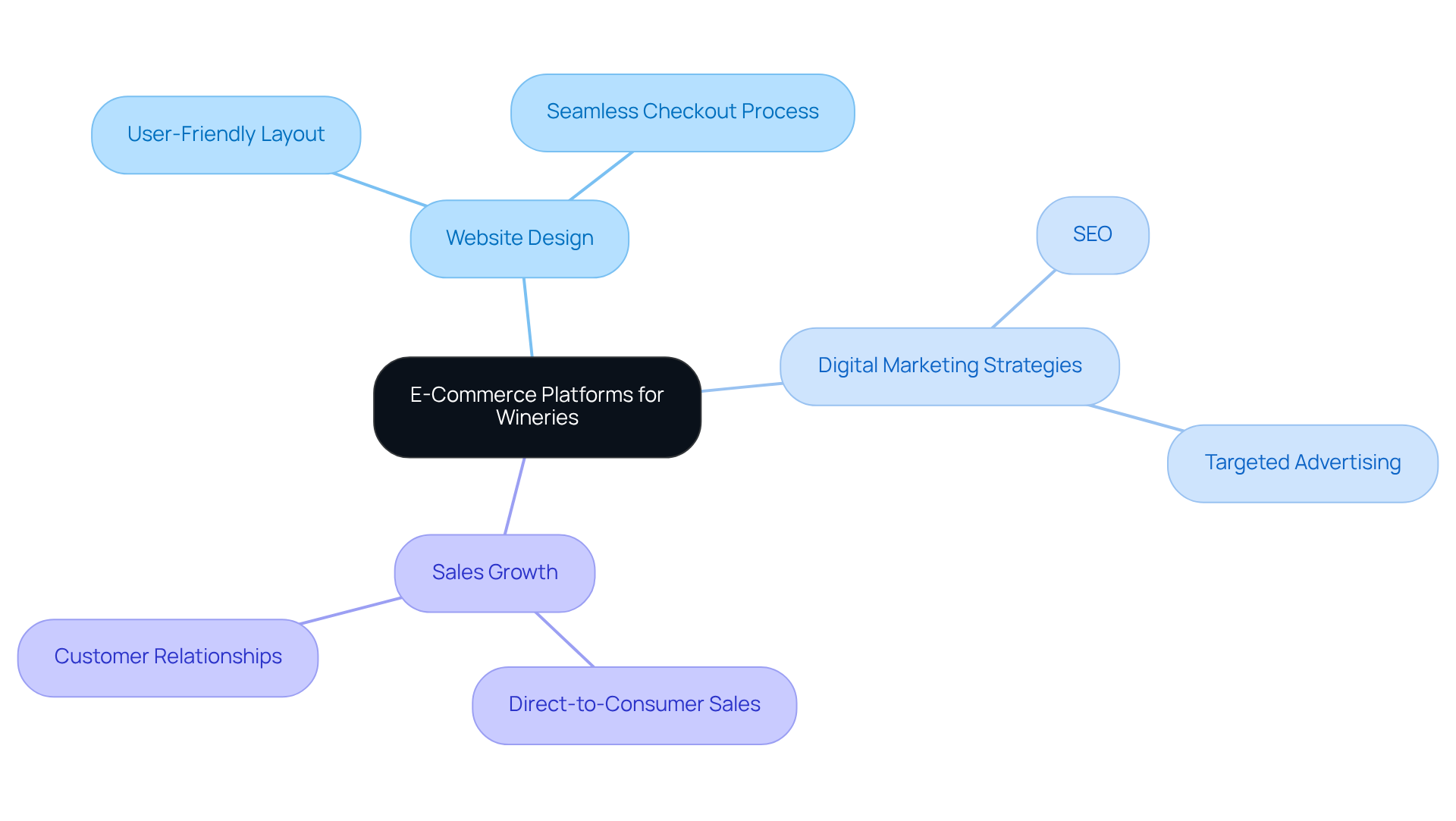
Conclusion
Embracing innovative business strategies is essential for wineries aiming to thrive in a competitive landscape. By adopting direct-to-consumer (DTC) approaches—such as personalized marketing, leveraging data analytics, and cultivating strong brand narratives—family-owned vineyards can enhance customer loyalty and drive sustainable growth. These strategies foster deeper connections with customers and position wineries to adapt to evolving market trends and consumer preferences.
Key insights emphasize the importance of:
- Optimizing wine club memberships
- Utilizing social media marketing
- Collaborating with local businesses to expand reach and engagement
Hosting memorable wine tasting events and investing in sustainable practices further align wineries with the values of modern consumers, particularly those who prioritize environmental responsibility. Each of these strategies contributes to building a resilient business model that can withstand market fluctuations.
As the wine industry continues to evolve, it is crucial for wineries to remain proactive in implementing these strategies. By prioritizing customer engagement and adapting to changing preferences, vineyards can enhance their immediate sales and secure a loyal customer base for the future. The call to action is clear: wineries must leverage these insights to craft a successful path forward, ensuring their legacy and success for generations to come.
Frequently Asked Questions
What is Enocap and what services does it offer to family-owned wineries?
Enocap specializes in creating bespoke direct-to-consumer (DTC) strategies for family-owned vineyards, focusing on fostering DTC growth, enhancing brand narratives, and securing strategic capital to ensure the longevity of business wine.
How can wineries optimize their online sales platforms?
Wineries can optimize their online sales platforms by enhancing customer engagement through personalized marketing, which can lead to significant e-commerce growth and transform casual purchasers into loyal wine club members.
What role do data analytics play in the wine business?
Data analytics are crucial for refining sales strategies, providing vineyards with insights into customer preferences and behaviors, which helps in personalizing experiences and boosting revenue.
How can wineries enhance their wine club memberships?
Wineries can enhance wine club memberships by offering personalized experiences, such as exclusive access to limited releases, tailored wine selections, and maintaining engaging communication with members.
What strategies can improve member engagement and retention in wine clubs?
Implementing tiered membership structures, sending personalized email suggestions, celebrating member milestones, and creating a sense of community can significantly improve member engagement and retention.
What demand generation techniques can wineries use to attract new customers?
Wineries can use targeted digital advertising, engaging content creation, social media campaigns, and hosting virtual tastings to drive sales and attract new customers.
How does social media influence customer purchasing decisions in the wine industry?
Social media has a significant impact on customer purchasing decisions, with 87% of shoppers indicating that it influences their choices.
What is the importance of strategic capital planning for wineries?
Strategic capital planning is essential for wineries to align with the right partners and funding opportunities, ensuring that resources are effectively allocated to support growth initiatives.




